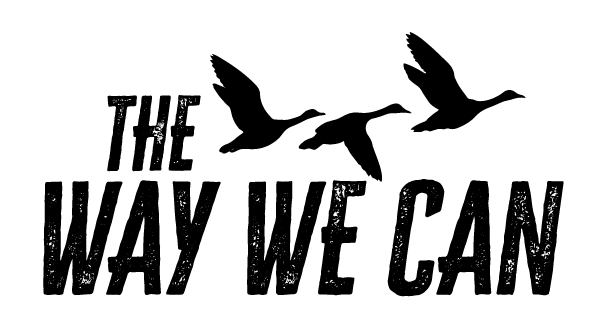Collective Intelligence
IQ + IQ + IQ + IQ + IQ + IQ ≠ CQ
Building on familiarity with the term ‘IQ’, we’ll call Collective Intelligence ‘CQ’. In some ways, CQ seems obvious on its face. It’s why some teams solve problems better than any of their individual members can solve them alone. It’s why “all of us are smarter than any of us.” (Except when we’re collectively stupid, which is another story.)
It may seem just as obvious how to build collectively intelligent teams: find the smartest people you can and put them to work together.
But research says otherwise. Adding a bunch of smart people up doesn’t produce more collectively intelligent teams than putting average people together does. In fact, there’s no correlation between the average IQs of team members and the collective intelligence of that team. There’s no correlation between the highest IQ on a team and that team’s collective intelligence either (Woolley, A. (2010) Evidence for a Collective Intelligence Factor in the Performance of Human Groups. Science, v330, p686-688.)
Three Factors Associated with Collective Intelligence
So, if adding up a bunch of smart people doesn’t produce collectively intelligent teams, what does?
Anita Woolley has devoted her career to understanding collective intelligence. Her team has analyzed hundreds of teams, assessing individual as well as shared capabilities. They’ve found three characteristics associated with higher levels of collective intelligence: social perceptiveness, having more women than men on teams, and roughly equal distribution of communication.
People who are socially perceptive sense what’s going on with others because they’re good at recognizing subtle non-verbal cues like facial expressions. As counter-intuitive as it may seem, including a socially perceptive person who collaborates well will increase collective intelligence more than adding a nobel prize winner who’s a bad listener.
The more women on a team, the more collectively intelligent that team tends to be (except when teams are composed only of women, in which case, their collective intelligence falls back to average). Much of this difference is correlated with women typically being more socially perceptive than men. It may also be that women tend to be less conversationally domineering and competitive which leads to the last point…
Teams that share air-time in roughly equal measure have higher levels of collective intelligence. Teams where the same one to three people dominate most conversations learn new skills less quickly and adapt less well to changing circumstances. This makes sense because conversational turn-taking, or balanced digital communication, ensures that more perspectives and insights influence collective understanding and action-taking (Woolley, A, 2016. The Dynamics of Collective Intelligence in Teams. YouTube. https://www.youtube.com/watch?v=_MI6bz4SvYQ).
General Factors of Intelligence
IQ+IQ+IQ+IQ+IQ+IQ ≠ CQ. But both IQ and CQ are general factors of intelligence. Individuals who are good at certain mental tasks–verbal, numerical, mechanical, or spatial–tend to be good at all of them. Likewise, teams that are good at any one kind of thinking and problem-solving, will likely be good at all of them.
We can group shared thinking and problem-solving tasks by type. ‘Generative challenges’ like brainstorming require divergent thinking and aggregating largely independent work. ‘Choice or decision-making processes’ rely on convergent thinking to identify the best information to solve a problem. ‘Negotiating tasks’ involve navigating competing priorities while addressing individual and collective needs at the same time. In ‘executing processes’ teams don’t develop ideas or make decisions but make objects quickly and accurately, coordinating pyschomotor activities to do so (Ibid).
The Way We Can Scaffold and Enhance Collective Intelligence
Since work is so deeply influenced by the strength of teams, learning how to enhance collective intelligence may be the most important skill teams can implement. Unfortunately, according to Woolley, it’s easier to build collectively intelligent teams by selecting members with these strengths than it is to improve the CQ of existing teams. For example, in Woolley’s research, teams composed of students learning about what makes teams collectively intelligent scored no better than teams that didn’t know what kinds of people and behaviors support CQ (Ibid).
While Woolley’s research indicates that it’s easier to build a collectively intelligent team from scratch, The Way We Can has deep experience helping teams improve how well they think, decide, and act together. We teach a mindset of collective intelligence; a map to move from the current to a more effective operational state; and a methodology that bridges the gap between knowing how to work better together and actually doing so. And, all learning occurs in the context of a team's most important existing work, because there’s too much work to stop cold for any training. Also, new approaches that prove highly useful are the only ones teams will continue to practice on their own.
Collective Intelligence Versus Shared Stupidity
Collective intelligence is the real deal. But so are the pitfalls of shared stupidity, group think, and mob mentality. Fortunately, there are steps we can take to build great teams from scratch, or to enhance how well existing teams work together in uncertain and complex environments. The Way We Can improves the social perceptiveness, listening, conversational turn-taking, decision-making, accountability, and execution of teams, whatever is true for them now. Get in touch if you’d like to learn how.



